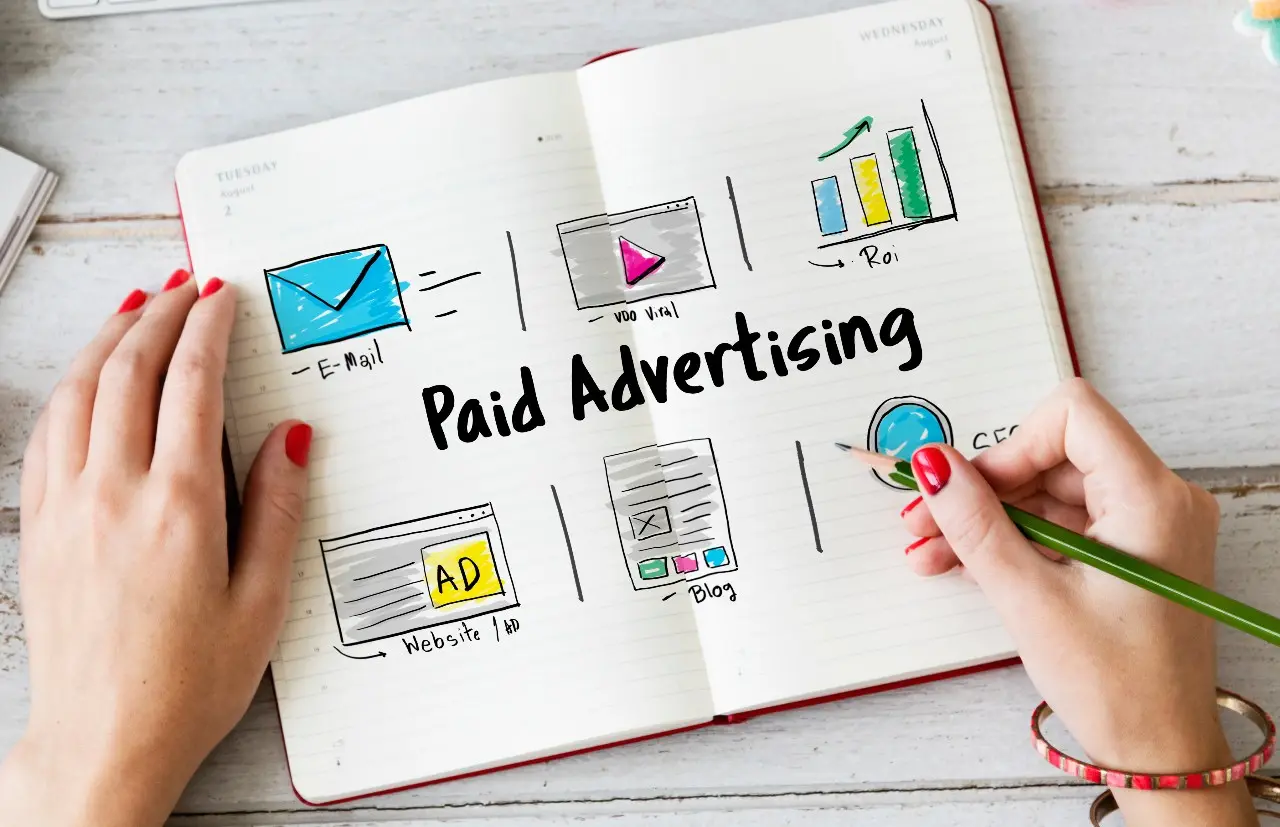Listen to article
In today’s data-rich environment, B2B marketers face increasing pressure to demonstrate the value of their spending. This scrutiny means optimizing marketing budget efficiency is more critical than ever. It’s no longer enough to simply allocate funds; marketers must understand which channels and strategies deliver the best ROI. Is your investment in content marketing paying off? Are you maximizing the potential of SEO compared to PPC? And where does mobile marketing fit into the mix?
This article dives deep into the latest stats and trends to help you make informed decisions about your marketing spend. We’ll explore everything from content marketing ROI in B2B sectors to the debate between organic and paid search, providing actionable insights to boost your marketing budget efficiency.
Where B2B Marketers Are Putting Their Dollars: Insights into Budget Focus
For B2B marketers, success hinges on strategic budget allocation. With buying cycles growing longer and decision-making involving multiple stakeholders, the distribution of funds can make or break marketing efforts. By examining current spending trends, marketers can uncover opportunities to refine their strategies for better ROI while staying competitive in a crowded landscape.
- Advertising and content are key spending priorities, with B2B marketers dedicating 19% of their budgets to advertising and 17% to content, as per a May 2024 Salesforce report. Source.
- Display advertising alone accounts for 16% of total ad spend, showcasing its continued relevance for driving awareness and engagement. Source.
- Organic search remains a powerful tool in the buyer’s journey, with 66% of B2B buyers leveraging internet search to inform purchase decisions. Source.
Takeaway: Balancing Advertising, Content, and Search for Maximum ROI
The current budget focus on advertising and content underscores their critical role in shaping brand visibility and nurturing leads, but the influence of organic search cannot be overlooked. With over two-thirds of B2B buyers turning to search engines during the research phase, marketers who allocate sufficient resources to SEO stand a better chance of capturing demand and accelerating conversions. Striking the right balance between paid tactics and organic efforts is essential for sustainable growth.
Don’t just invest in SEO—integrate it with your advertising and content strategies. For example, repurpose high-performing blog content into paid ads or promote SEO-optimized thought leadership articles via display campaigns to amplify visibility. Holistic planning ensures your investments reinforce each other, driving stronger returns.
The Role of SEO in B2B Marketing Budgets: Key Insights
B2B companies face increasing pressure to maximize ROI while navigating a rapidly shifting digital landscape. Strategic budget allocation is no longer just a financial decision—it reflects a company’s broader commitment to driving visibility and engagement. SEO, a core pillar of digital marketing, continues to command significant investment, underscoring its long-term impact on organic growth and lead generation. But how do its priorities stack up against trending technologies like AI chatbots or video marketing? Let’s break it down:
- B2B organizations allocate approximately 15% of their marketing budget to SEO, surpassing investments in AI chatbots (12%) and video marketing (9%). Source
- Search marketing accounts for 42% of all digital marketing expenditure. Source
- 61% of B2B marketers identified SEM/PPC as the most effective paid channel for content marketing, followed by social media advertising/promoted posts (49%), sponsorships (48%), and digital display advertising (35%). Source
Takeaway: Prioritizing SEO is a Strategic Imperative
In a world where search engines remain the starting point for most B2B purchase journeys, it’s no surprise that SEO commands a sizable share of marketing budgets. The data highlights how businesses aren’t just investing in SEO—they’re leveraging its synergy with paid search to dominate high-intent channels. While channels like social media, digital display ads, and sponsorships offer valuable opportunities for brand awareness, search marketing stands unrivaled in delivering immediate, measurable results.
Pro Tip: To further amplify your SEO efforts, consider integrating it with other paid strategies like SEM/PPC. This hybrid approach ensures that your brand captures both organic and paid attention, maximizing your visibility where it matters most—right at the top of the search results.
How B2B Budgeting Practices Impact Content Marketing ROI
The way B2B organizations allocate their budgets can have a profound impact on the success—or failure—of their content marketing efforts. While mature companies often invest heavily in content marketing as a key driver of sales and lead generation, emerging or struggling organizations tend to underinvest, resulting in stagnant growth or missed opportunities. Additionally, the ability (or inability) to measure ROI is a pivotal factor that distinguishes high-performing marketing teams from those falling behind. Let’s take a closer look at the numbers shaping this dynamic.
- B2B organizations excelling in content marketing allocate around 40% of their total marketing budget (excluding staff costs) to content marketing. Source
- Less successful B2B organizations, on the other hand, dedicate only 14% of their marketing budgets to content marketing. Source
- Across the board, the average B2B organization invests 26% of its total marketing budget into content marketing efforts. Source
- Sophisticated and mature content marketing teams allocate 33% of their budgets specifically to content initiatives. Source
- Adolescent-phase organizations allocate about 25%, while young or early-stage organizations spend only 19%. Source
- In 2023, 58% of B2B marketers reported that content marketing directly boosted their sales. Source
- Only 25% of B2B marketers can confidently showcase how content marketing reduced their customer acquisition costs. Source
- Alarmingly, 47% of B2B organizations don’t measure their content marketing ROI at all. Source
- Of those who skip ROI measurement, many cite a lack of formal justification needed and the absence of streamlined calculation methods as reasons. Source
- Among organizations that succeed in content marketing, 55% actively measure ROI to inform and refine their strategies. Source
For B2B marketers, the gap between success and stagnation boils down to intentionality. Organizations seeing strong results invest strategically in their content marketing and actively measure ROI, enabling continuous improvement and accountability. In contrast, those who don’t track ROI or fail to allocate sufficient resources risk leaving their content efforts ineffective or unoptimized.
Pro Tip:
Bridge the gap by setting clear ROI measurement protocols right from the start. Use analytics tools to monitor performance metrics such as lead generation, customer acquisition cost, and conversion rates. This will help you justify your budget and fine-tune strategies over time. Remember, strategic investment paired with data-driven decisions is the fastest route to content marketing success.
Potential of High-ROI Marketing Channels with Smarter Strategies
In a world where marketing budgets are scrutinized more than ever, knowing which channels deliver the best bang for your buck is essential. Data shows that some channels consistently outperform others in ROI, but the real challenge lies in how effectively businesses use this information. Surprisingly, many companies still fail to capitalize on data-driven insights, leaving untapped growth on the table. Prioritizing the right channels and embracing analytics can be the key to unlocking greater success—and maximizing return on every dollar spent.
- Email marketing, SEO, mobile marketing, and content marketing are among the highest-performing channels in terms of ROI. Source
- Email marketing continues to lead the charge in ROI, proving its effectiveness in nurturing leads and driving conversions. Source
- SEO remains a powerhouse for ROI, reinforcing the critical importance of organic search in driving visibility and traffic. Source
- Mobile marketing shows impressive ROI, underscoring the need for mobile-optimized websites and campaigns as mobile usage dominates user behavior. Source
- Content marketing’s ability to generate leads and engage audiences makes it a cornerstone for high ROI strategies. Source
- Alarmingly, 44% of businesses admit to lacking a clear understanding of their marketing efforts’ impact due to insufficient data insights. Source
- A staggering 85% of B2B marketers find it challenging to tie marketing efforts to concrete business results. Source
- Despite its value, 87% of marketers believe data remains their company’s most underutilized asset. Source
The numbers paint a clear picture: marketing channels like email, SEO, and content marketing are outperformers, yet too many businesses fail to tap into their full potential due to a lack of actionable analytics. To stay competitive, brands must move beyond intuition and embrace a culture of data-driven decision-making. This means not only focusing on high-ROI channels but also investing in the tools and skills necessary to calculate ROI accurately and optimize campaigns in real time.
Pro Tip:
To supercharge your marketing ROI, segment customer data for hyper-personalized campaigns and identify patterns in underperforming channels. Marketing automation tools like Salesforce, HubSpot, and Google Analytics can help bridge the gap between insights and action, ensuring you allocate your budget where it matters most.
SEO Outperforms PPC in Driving B2B Sales
When it comes to digital marketing strategies, the debate between SEO and PPC often centers around which delivers better results. For B2B marketers, where the sales cycle is typically longer and decisions involve multiple stakeholders, the data consistently highlights SEO as the more effective option for converting leads into sales. Unlike PPC, which provides immediate but often short-lived results, SEO offers a long-term, compounding impact that aligns with the complex nature of B2B buying journeys.
- According to Databox, 70% of B2B marketers believe that SEO drives more sales than PPC. Source
The takeaway here is clear: SEO isn’t just about visibility—it’s about building trust and authority that translate into measurable sales growth over time. This underscores the importance of creating a well-rounded SEO strategy that focuses on high-quality content, technical optimization, and targeted keyword research tailored to your industry and audience. While PPC can complement your efforts, especially for quick wins or specific campaigns, relying too heavily on it may drain your budget without delivering sustained ROI.
For businesses looking to optimize their resources and achieve long-term results, exploring outsourcing SEO services can be a game-changer. Outsourcing allows companies to leverage professional expertise, save time, and focus on core business operations, all while ensuring their SEO strategy remains competitive and effective.
Pro Tip:
To maximize your SEO potential, focus on aligning your content strategy with your customers’ needs at every stage of the buyer’s journey. Invest in creating in-depth resources like whitepapers, case studies, and thought leadership articles that resonate with decision-makers. Tools like SEMrush or Ahrefs can help identify high-converting keywords to target, ensuring your SEO strategy is laser-focused on driving meaningful sales results.
SEO vs. PPC: Which Drives the Right Traffic for Your Goals?
When it comes to building a solid digital strategy, businesses often weigh the long-term benefits of SEO against the immediate impact of PPC. While each has its merits, the debate revolves around which delivers better ROI and aligns more closely with your business objectives. At its core, this comparison isn’t about choosing one over the other—it’s about understanding how they complement each other to maximize your return. Here’s a closer look at the stats behind SEO and PPC to help decipher their roles in your strategy.
- 30% of marketers surveyed find PPC more effective for generating sales than SEO, while 70% believe SEO outperforms PPC. Source
- Approximately 39% of all eCommerce traffic comes from search engines, with 35% being organic and only 4% originating from paid search ads. Source
- Google AdWords results capture 65% of the clicks originating from keyword searches, while organic results only account for 35%. Source
- Only 35% of organic clicks contain keywords related to purchases. Source
Takeaway: Choosing the Right Search Strategy for Balance and Growth
The relationship between SEO and PPC isn’t a battle—it’s a partnership. SEO provides a sustainable, cost-effective foundation for long-term traffic and brand visibility, particularly for educational or high-volume keywords. PPC, on the other hand, thrives in capturing high-intent leads, especially for transactional or immediate goals. If your brand is in a competitive niche, combining organic SEO efforts with targeted PPC campaigns ensures you’re not just attracting traffic but the right traffic.
Use data analytics to identify the keywords and segments where PPC performs best and channel SEO efforts toward informative or awareness-driven content. This way, you can build a comprehensive strategy that plays to the strengths of both approaches while keeping a close watch on ROI optimization.
Optimizing Paid Ad Performance: ROI Insights Across Channels
When it comes to paid advertising, not all platforms deliver the same bang for your buck. Understanding which channels yield the best ROI is essential for smart budget allocation and sustained growth. By carefully analyzing platform-specific performance, businesses can ensure their marketing dollars are being used where they count the most. Let’s explore what the latest data reveals about paid ad performance.
- On average, businesses earn $8 for every $1.60 spent on Google Ads. Source
- Google Ads remains a cornerstone of PPC strategies, with 80% of companies leveraging the platform. Source
- YouTube ad revenues rose by 7.8% year over year, while Google Network ad revenues saw a 4.5% decline. Source
These figures highlight both the potential and complexity of paid advertising. While Google Ads continues to dominate as a high-ROI platform, the disparity in revenue growth between YouTube ads and Google Network ads signals a shift in consumer behavior and platform preference. Businesses investing in paid advertising should consider doubling down on high-growth channels like YouTube, which is tapping into the increased demand for video-driven experiences.
Pro Tip:
Don’t just follow the trends—analyze your own data. Use tools like Google Analytics and ad platform insights to pinpoint which campaigns and channels resonate most with your audience. Continuously test and refine your strategy to stay ahead of shifts in performance and maximize ROI.
Streamlining PPC Strategies for Maximum ROI
The ever-competitive digital advertising landscape leaves no room for inefficiencies, yet many businesses unknowingly allow their PPC campaigns to bleed resources. From neglecting regular audits to relying solely on costly platforms, these missteps can significantly hamper ROI. By adopting a proactive approach and exploring underutilized platforms, businesses can not only stretch their advertising dollars but also uncover untapped opportunities for growth.
- A staggering 72% of companies haven’t reviewed their ad campaigns in over a month, leaving room for outdated targeting, ineffective ad copy, and wasted ad spend. Source
- Bing Ads provides a cost-effective alternative to Google Ads, with an average cost-per-click (CPC) that is 33% lower. Source
A “set it and forget it” approach to PPC campaigns is no longer sustainable in today’s ad-driven market. Regularly reviewing and optimizing your campaigns is critical—whether it’s fine-tuning ad copy or adjusting targeting parameters to reflect current trends. Additionally, expanding your ad strategy beyond Google by leveraging platforms like Bing Ads can deliver significant cost savings without compromising performance.
Don’t rely solely on one platform for PPC success. Diversify your campaigns across multiple channels, and use analytics tools to compare their performance. This allows you to balance cost-efficiency with reach, ensuring your ad spend is working as hard as it should.
Industry-Specific Insights into SEO ROI: Key Trends to Watch
For companies navigating competitive landscapes, SEO has become more than a marketing strategy—it’s a core driver of profitability. While the average ROI for SEO across industries exceeds $22 for every dollar spent, the nuances tell a broader story. Certain industries, like real estate and B2B SaaS, are reaping extraordinary rewards, while specialized campaign types, such as technical SEO or thought leadership, demonstrate how tailored approaches can accelerate breakeven points and maximize returns.
- Businesses generally earn an average of $22 or more for every dollar invested in SEO. Source
- B2B SaaS companies report a remarkable 702% SEO ROI, achieving breakeven in just 7 months. Source
- Thought Leadership SEO campaigns yield an ROI of 748%, with breakeven in 9 months. Source
- Technical SEO campaigns deliver a return of 117%, with breakeven in only 6 months. Source
- Industry-specific ROI highlights:
- Real estate: 1,389% ROI, breakeven in 13 months. Source
- Higher Education: 994% ROI. Source
- Oil & Gas: 906% ROI. Source
- Industrial IoT: 866% ROI. Source
- Manufacturing: 813% ROI. Source
- Pharmaceutical: 826% ROI. Source
- Biotech: 788% ROI. Source
- Solar Energy: 770% ROI. Source
- Addiction Treatment: 736% ROI. Source
- IT Staffing: 612% ROI. Source
- eCommerce: 317% ROI. Source
Takeaway: Unlock Industry-Specific Potential with Tailored SEO Strategies
The data reinforces that ROI from SEO isn’t a one-size-fits-all scenario—industries like real estate, pharmaceutical, and SaaS are experiencing transformative growth, but these results stem from strategic efforts rooted in their unique audience needs. High-performing sectors demonstrate one clear trend: the integration of specific campaign models, be it thought leadership, technical initiatives, or niche-specific focus.
For businesses, the key isn’t just to invest in SEO but to identify which strategies align with their operational goals. A fast breakeven period from technical SEO might suit companies eager for near-term gains, while thought leadership campaigns shine for brands seeking long-term authority in competitive markets.
To maximize your SEO ROI, combine industry-specific research with predictive metrics to refine your strategy. Tools like Ahrefs, SEMrush, and Google Search Console can help identify focus areas while measuring ROI consistently. Regularly analyze performance and pivot campaigns to reinforce what works best for your industry and audience dynamics.
Additionally, businesses looking to improve their digital presence while driving measurable results can benefit from exploring full-service marketing. This holistic approach ensures that SEO efforts are integrated seamlessly with other strategies like content marketing, social media, and paid advertising to create a cohesive, high-ROI digital marketing ecosystem.
Balancing ROI Priorities with Cost Efficiency in Marketing
Navigating the delicate balance between stretching marketing budgets and delivering measurable ROI has never been more critical for marketing planners. With increased scrutiny on every dollar spent, marketing teams are tasked not only with cutting unnecessary expenses but also with identifying strategies that yield the highest potential for returns. These challenges are often compounded by the difficulty of attributing revenue impact to key efforts like content marketing or social media. Here’s a closer look at the numbers shaping these priorities:
- 75% of marketing planners prioritize cost control. Source
- 60% of marketing planners consider ROI a key focus. Source
- 71% of marketing executives report that attributing social media and content marketing efforts to revenue generation is their biggest challenge in proving ROI. Source
The pressure to prove ROI while keeping costs in check is reshaping the way marketers allocate their budgets. However, focusing solely on cutting costs can sometimes mean sacrificing long-term gains. A more strategic approach involves zeroing in on high-impact marketing channels and ensuring that attribution models accurately measure effectiveness. Tools like customer journey analytics or AI-driven insights can help close this gap, providing a clearer view of which campaigns truly drive revenue.
Pro Tip:
Instead of slashing budgets across the board, consider redirecting funds to channels where ROI is easier to track or historically stronger. Additionally, refine your attribution methods to include multi-touch models, so every stage of your customer’s journey is properly accounted for. This ensures you aren’t undervaluing long-term nurturing strategies in favor of short-term wins.
Conclusion
The intricate balance between budget allocation and ROI is the cornerstone of marketing success. As the data reveals, understanding where to allocate your resources is just as critical as measuring the returns on those investments. From the dominance of SEO in driving sustainable leads to the undeniable power of content marketing in boosting sales, the insights presented highlight the strategies that top-performing B2B organizations prioritize. However, the recurring challenge of measuring ROI underscores an opportunity for marketers to refine their analytics, streamline their tracking processes, and leverage data-driven insights to ensure no dollar goes to waste.
Marketers who succeed in aligning their budgets with high-performing channels like SEO, email marketing, and content marketing can achieve exceptional returns—be it the $22 earned on every SEO dollar or the lasting engagements driven by content strategies. But it’s not just about where you spend; it’s about how you track, adapt, and optimize for growth.
Ready to boost your traffic and grow your website? Your customers are looking for you, and our SEO services can help you be found across search engines. Let’s turn your marketing budget into measurable success. Reach out today to take the first step.
About Creating Budget Allocation vs ROI: What the Data Reveals
This guide was written by the Scopic Studios team and reviewed by Araksya Hakobjanyan, SEO Lead at Scopic Studios.
Scopic Studios delivers exceptional and engaging content rooted in our expertise across marketing and creative services. Our team of talented writers and digital experts excel in transforming intricate concepts into captivating narratives tailored for diverse industries. We’re passionate about crafting content that not only resonates but also drives value across all digital platforms.
Note: This blog’s images are sourced from Freepik.

































































































































































































































































